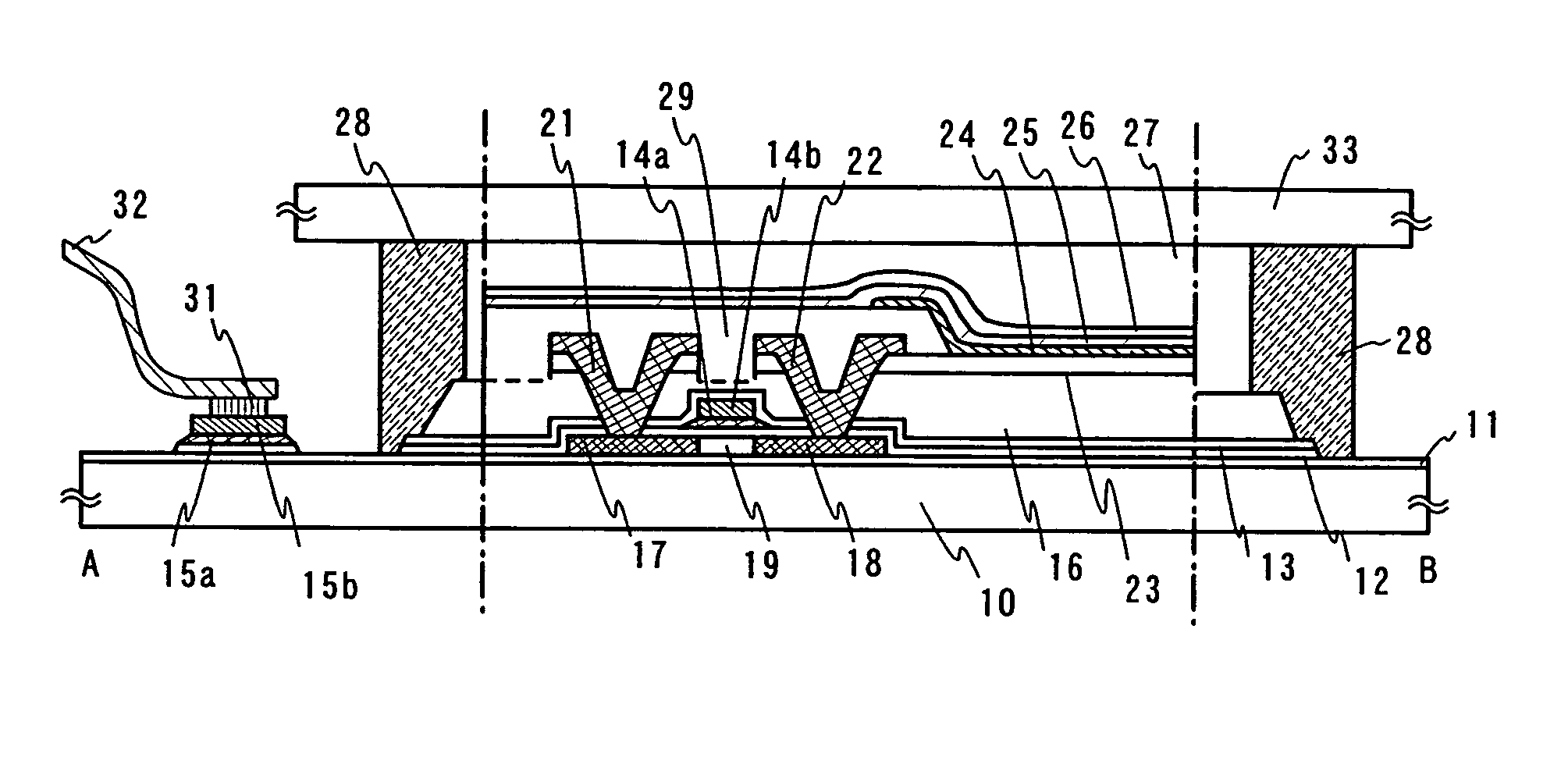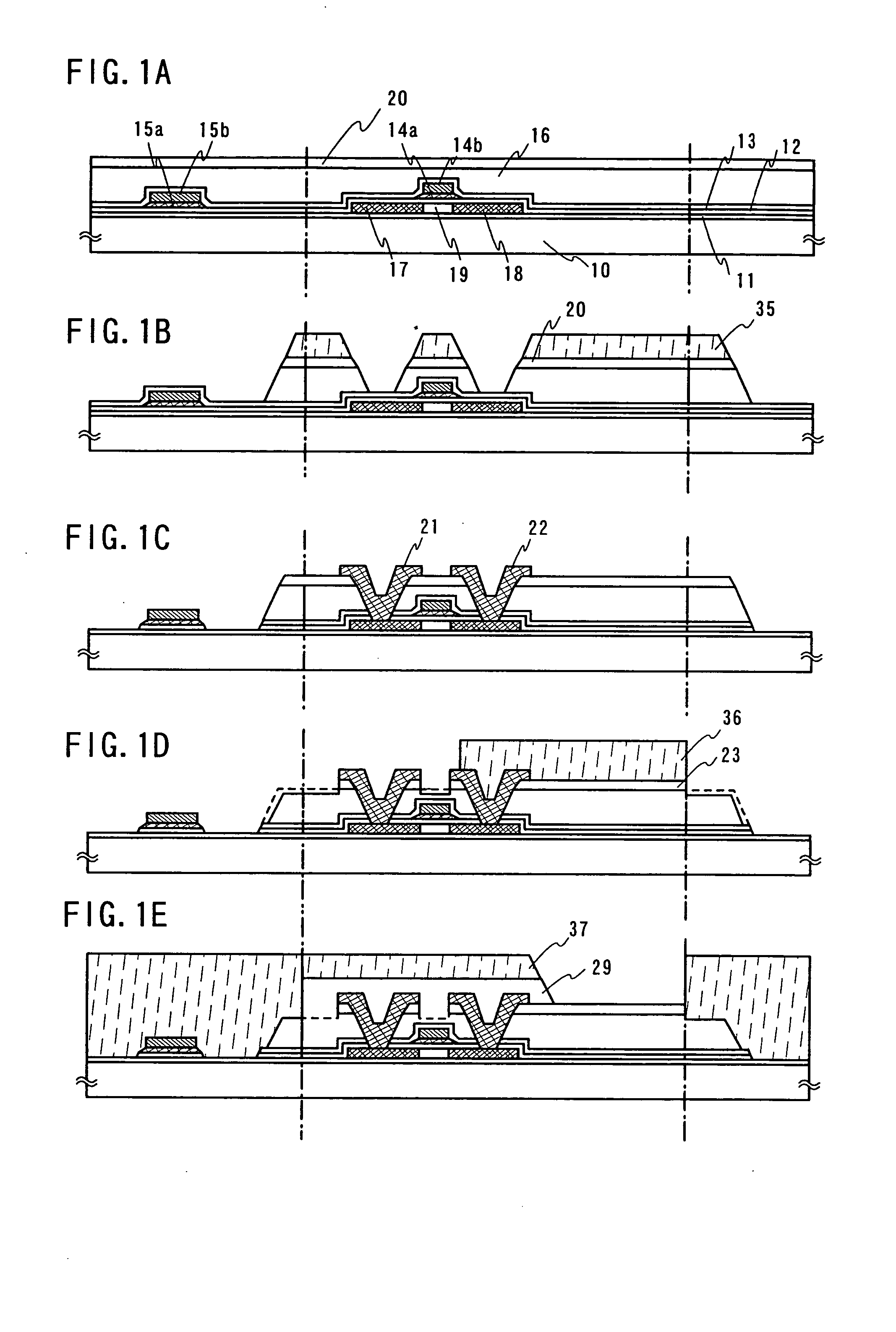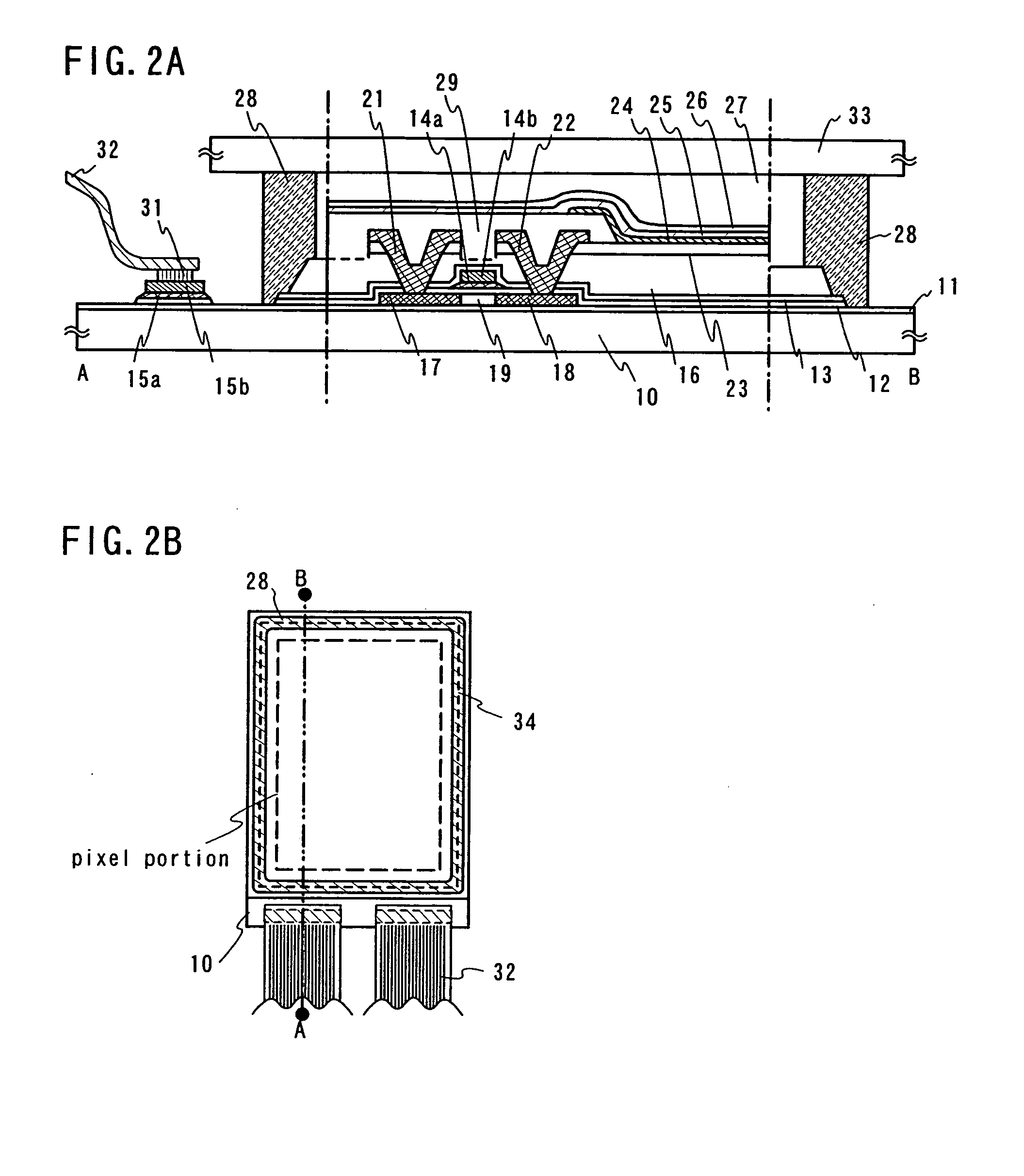Light emitting device and method of manufacturing thereof
- Summary
- Abstract
- Description
- Claims
- Application Information
AI Technical Summary
Benefits of technology
Problems solved by technology
Method used
Image
Examples
embodiment 1
[0102] [Embodiment 1]
[0103] The present embodiment will describe an example of a bottom-emission light emitting device with reference to FIG. 4A.
[0104] A TFT connected to a light emitting element is formed on a transparent substrate (which is a glass substrate having the refractive index of about 1.55). Since the device is a bottom-emission type, interlayer insulating films, a gate insulating film, and a base insulating film are formed of materials having high light transmitting properties, respectively. As a first interlayer insulating film, a SiNO film formed by PCVD is used. As the second interlayer insulating film, a SiOx film formed by the coating method is employed.
[0105] A transparent conductive film is formed on an entire surface of the second interlayer insulating film. The transparent conductive film will serve as a first electrode 323. The transparent conductive film is formed of ITSO (100 nm in thickness), which is a transparent conductive film including SiOx. The ITSO...
embodiment 2
[0114] [Embodiment 2]
[0115] The present embodiment will describe an example of a light emitting device in which light can be emitted through both substrates with reference to FIG. 4B.
[0116] A TFT connecting to a light emitting element is formed on a transparent substrate (which is a glass substrate having the refractive index of about 1.55). In order to transmit light to display images, interlayer insulating films, a gate insulating film, and a base insulating film are formed of materials having high light transmitting properties, respectively. As for a first and third interlayer insulating films, a SiNO film formed by PCVD is used. As for a second interlayer insulating film, a SiOx film formed by the coating method is used.
[0117] A transparent conductive film is formed over an entire surface of the transparent substrate. The transparent conductive film will serves as a first electrode 423. The transparent conductive film is formed of ITSO (100 nm in thickness), which is a transpa...
embodiment 3
[0126] [Embodiment 3]
[0127] In Embodiment 3, an example of a top-emission light emitting device will be described with reference to FIGS. 6A and 6B.
[0128] An n-channel TFT connecting to a light emitting element is formed over a substrate 200 having an insulated surface. Since the top-emission light emitting device is formed in the present embodiment, interlayer insulating films, a gate insulating film 202, and a base insulating film 201 are not necessary to be formed of materials having the light emitting properties, respectively. In the embodiment, a first interlayer insulating film 210 is a SiNO film formed by PCVD, which is a highly stable material film. A second interlayer insulating film is a SiOx film formed by the coating method, which is a highly stable material film. The interlayer insulating films and the gate insulating film 202 are selectively etched to form contact holes, which reach to an active layer of the n-channel TFT. A conductive film (TiN / Al-Si / TiN) is then for...
PUM
 Login to View More
Login to View More Abstract
Description
Claims
Application Information
 Login to View More
Login to View More - R&D
- Intellectual Property
- Life Sciences
- Materials
- Tech Scout
- Unparalleled Data Quality
- Higher Quality Content
- 60% Fewer Hallucinations
Browse by: Latest US Patents, China's latest patents, Technical Efficacy Thesaurus, Application Domain, Technology Topic, Popular Technical Reports.
© 2025 PatSnap. All rights reserved.Legal|Privacy policy|Modern Slavery Act Transparency Statement|Sitemap|About US| Contact US: help@patsnap.com



